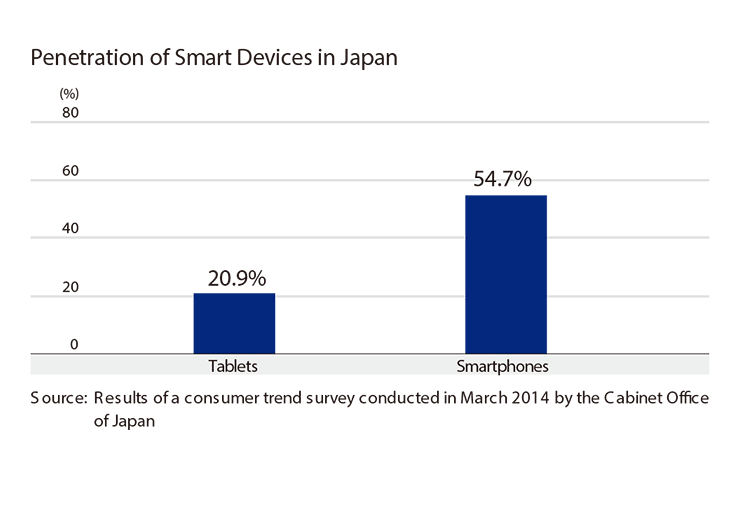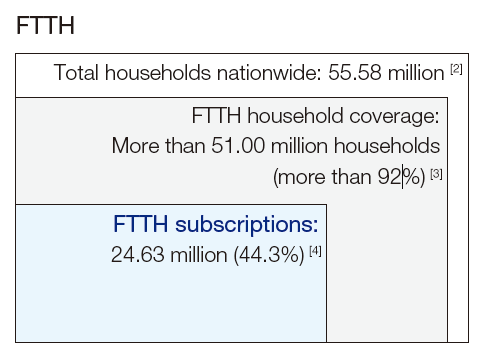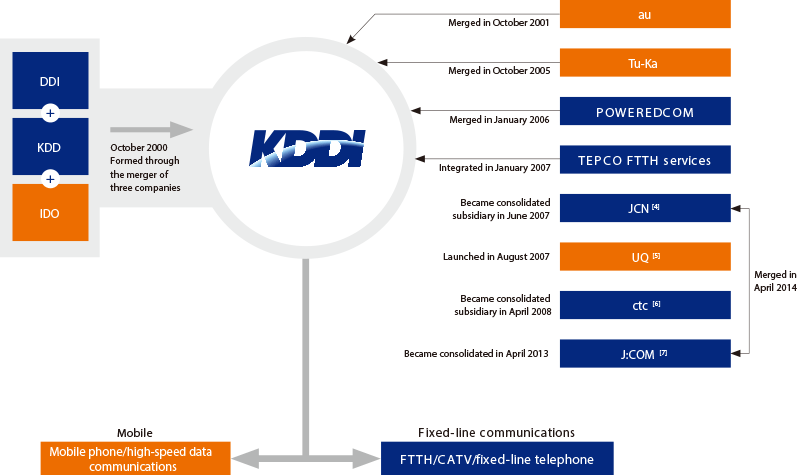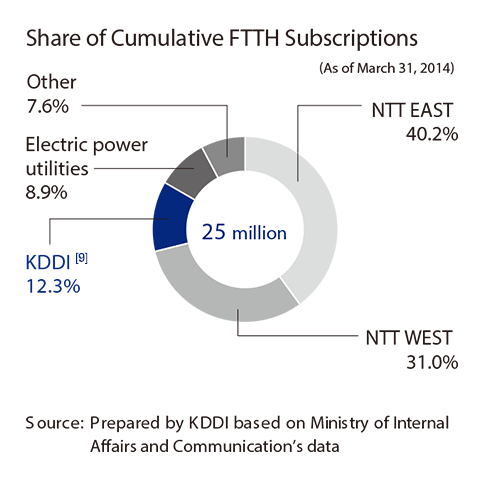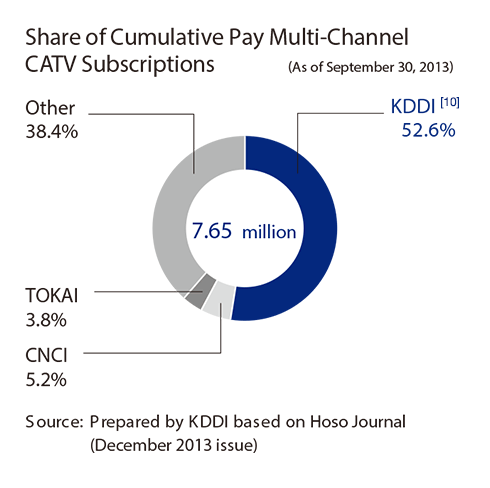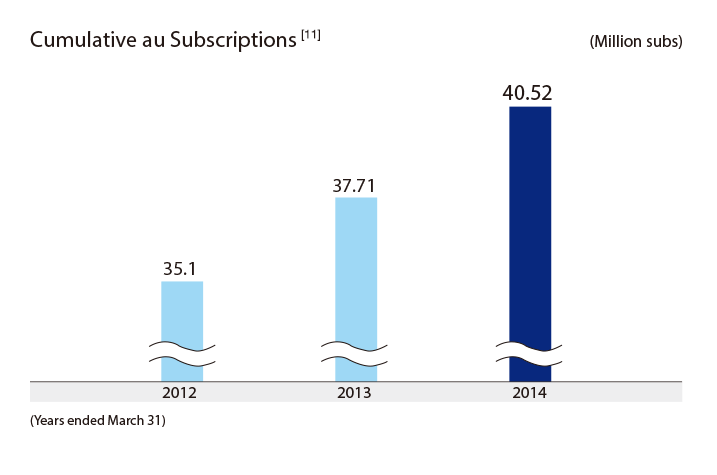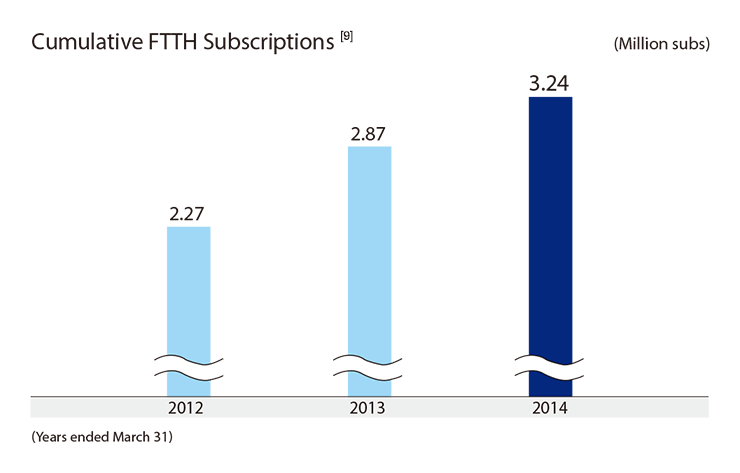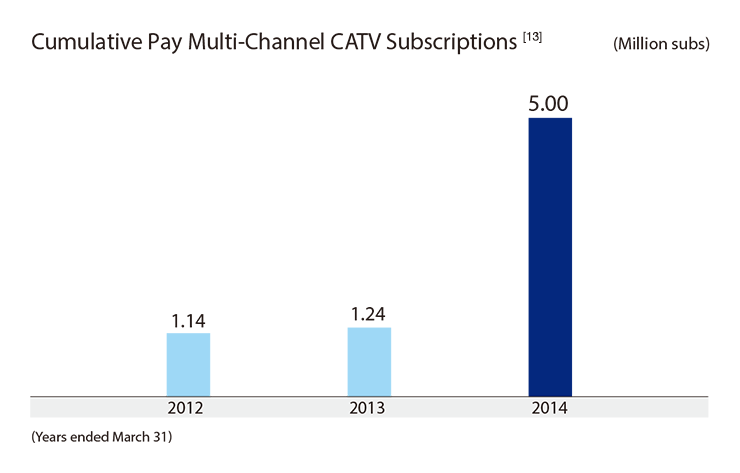- KDDI HOME
 Corporate Information
Corporate Information  Investor Relations
Investor Relations  IR Documents
IR Documents  Integrated Report
Integrated Report  Selected Pages of Integrated Report (2014)
Selected Pages of Integrated Report (2014)  The Japanese Telecommunications Market and KDDI
The Japanese Telecommunications Market and KDDI
The Japanese Telecommunications Market and KDDI
Characteristics of the Japanese Mobile Telecommunications Market
Mobile
As of March 31, 2014, cumulative mobile communication subscriptions in Japan totaled 144.01 million, up 5.9% year on year. As in the preceding fiscal year, smartphone subscriptions grew significantly, and the smartphone penetration rate exceeded 50% as of March 31, 2014.
The Japanese market for mobile telecommunications is characterized by the advancement of LTE networks, which enable high-speed data communications, leading to the creation of communications environments that facilitate diverse services and are independent of handset and location. Going forward, the market is expected to continue expanding, owing to increased use of tablets and mobile Wi-Fi routers, as well as smartphones.
Fixed-Line Broadband
The nationwide FTTH household coverage ratio is more than 90% or "homes passed [1]" is more than 70%, indicating that high-speed broadband environments are essentially in place nationwide.
As of March 31, 2014, fixed-line broadband service subscriptions numbered 35.85 million, up 1.6% from the preceding fiscal year.
Fixed-line broadband service penetration is already at 70%. Amid a gradual market expansion, telecommunications providers are working to boost revenues by promoting "triple play" services that include access to Internet, telephony, and video.
KDDI's Status
Leveraging the KDDI Group's Comprehensive Mobile and Fixed-Line Capabilities
The KDDI Corporation was established in October 2000 through the merger of DDI CORPORATION, a long distance communications company; KDD Corporation, an international communications company; and IDO CORPORATION, which provided mobile communications. Thereafter, we expanded our business through mergers in both the mobile and fixed-line businesses.
As a result, KDDI has amassed a host of access lines. In the mobile category, these include 3G/LTE and WiMAX networks. In the fixed-line category, we have FTTH and CATV. The KDDI Group's customer base includes approximately 45 million mobile subscribers [1] and around 8 million fixed-line broadband subscribers [2]. We are leveraging this situation by promoting the "3M Strategy [3]."
Principal Businesses of the KDDI Group
Mobile
As of March 31, 2014, au mobile subscriptions numbered 40.52 million, up 7.5% year on year and accounting for a 29.0% share of the mobile market, which has three major carriers.
Of this figure, in the Personal Services segment, which accounts for more than 70% of KDDI's consolidated operating revenues, smartphone penetration had risen to 49% (35% if limited to LTE).
UQ Communications Inc., an equity-method affiliate that provides WiMAX service and "WiMAX 2+" (compatible with TD-LTE) service using 50MHz bandwidth of frequency in the 2.5GHz band, has subscriptions in place with more than 4 million customers.
Fixed-Line Broadband
As of March 31, 2014, FTTH subscriptions stood at 3.24 million, up 12.8% year on year and accounting for a market share of 12.3%.
In CATV, in addition to the industry's second-largest company, JCN, in April 2013 KDDI included into its scope of consolidation the largest company, J:COM.
Consequently, KDDI's market share led the industry, with household subscribers numbering 5.00 million, up 3.76 million year on year. Also, J:COM got off to a new start on April 2014, due to a merger between its former self and the former JCN.
- Other IR Information
- Recommended Contents
-

